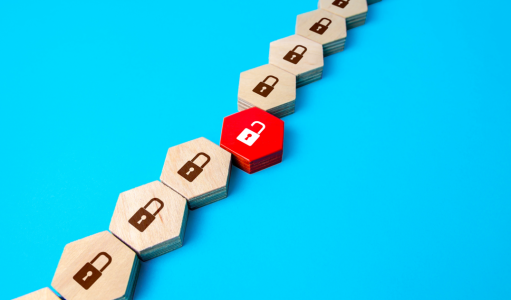Australia sees highest data breach numbers in three years—government sector hardest hit
By
- Replies 3
In an age where our personal information is digitised and stored in countless databases, the security of that data is paramount.
However, a recent report has revealed a concerning trend for Australians, highlighting that not even government sectors are immune to the growing threat of cyberattacks.
The Office of the Australian Information Commissioner (OAIC) has published alarming statistics showing that Australia has experienced the highest number of data breaches in over three years, with the government sector being one of the primary targets.
From January to June, the OAIC recorded a staggering 527 breaches, a nine per cent increase from the previous six months and the highest figure reported since the latter half of 2020.
Australian Privacy Commissioner Carly Kind expressed her concern, noting, ‘Almost every day, my office is notified of data breaches where Australians are at likely risk of serious harm’.
The top five sectors reporting these breaches include health service providers, the Australian government, finance, education, and retail.
The Australian government reported 63 breaches in the first half of the year, indicating that the issue is widespread and affects various facets of society.
Sixty-seven per cent were identified as malicious or criminal attacks, while 30 per cent resulted from human error, and three per cent were due to system faults.
Cybercriminals have exploited vulnerabilities through phishing, ransomware, and compromised or stolen credentials.
Most incidents affected up to 100 people, but the repercussions extended beyond mere numbers.
The most significant breach within this period involved MediSecure, impacting approximately 12.9 million Australians.
‘This harm can range from an increase in scams and the risk of identity theft to emotional distress and even physical harm,’ Kind said.
‘Privacy and security measures are not keeping up with the threats facing Australians' personal information, and addressing this must be a priority.’
Commissioner Kind has emphasised that privacy and security measures need to catch up with threats to Australians' personal information and that addressing this gap must be a priority.
The Home Affairs department has yet to respond when contacted for comment.
In other news, MediSecure, an electronic prescription provider, suffered a significant data breach affecting personal and health information.
The breach traced back to a third-party vendor, triggered a coordinated response from the federal government. You can read more about it here.
 Have you or someone you know been affected by a data breach? What measures do you take to safeguard your personal information? Share your experiences and tips in the comments below.
Have you or someone you know been affected by a data breach? What measures do you take to safeguard your personal information? Share your experiences and tips in the comments below.
However, a recent report has revealed a concerning trend for Australians, highlighting that not even government sectors are immune to the growing threat of cyberattacks.
The Office of the Australian Information Commissioner (OAIC) has published alarming statistics showing that Australia has experienced the highest number of data breaches in over three years, with the government sector being one of the primary targets.
From January to June, the OAIC recorded a staggering 527 breaches, a nine per cent increase from the previous six months and the highest figure reported since the latter half of 2020.
Australian Privacy Commissioner Carly Kind expressed her concern, noting, ‘Almost every day, my office is notified of data breaches where Australians are at likely risk of serious harm’.
The top five sectors reporting these breaches include health service providers, the Australian government, finance, education, and retail.
The Australian government reported 63 breaches in the first half of the year, indicating that the issue is widespread and affects various facets of society.
Sixty-seven per cent were identified as malicious or criminal attacks, while 30 per cent resulted from human error, and three per cent were due to system faults.
Cybercriminals have exploited vulnerabilities through phishing, ransomware, and compromised or stolen credentials.
Most incidents affected up to 100 people, but the repercussions extended beyond mere numbers.
The most significant breach within this period involved MediSecure, impacting approximately 12.9 million Australians.
‘This harm can range from an increase in scams and the risk of identity theft to emotional distress and even physical harm,’ Kind said.
‘Privacy and security measures are not keeping up with the threats facing Australians' personal information, and addressing this must be a priority.’
Commissioner Kind has emphasised that privacy and security measures need to catch up with threats to Australians' personal information and that addressing this gap must be a priority.
The Home Affairs department has yet to respond when contacted for comment.
In other news, MediSecure, an electronic prescription provider, suffered a significant data breach affecting personal and health information.
The breach traced back to a third-party vendor, triggered a coordinated response from the federal government. You can read more about it here.
Key Takeaways
- Australia has seen the highest number of data breaches in over three years, with the government sector as a major target.
- The Office of the Australian Information Commissioner reported 527 breaches in the year's first half, up by nine per cent from the previous six months.
- The majority, 67 per cent, of these breaches were due to malicious or criminal attacks, with human error accounting for 30 per cent.
- The report highlighted the real impact of these breaches on individuals and stressed the need for better privacy and security measures to protect Australians' personal information.








